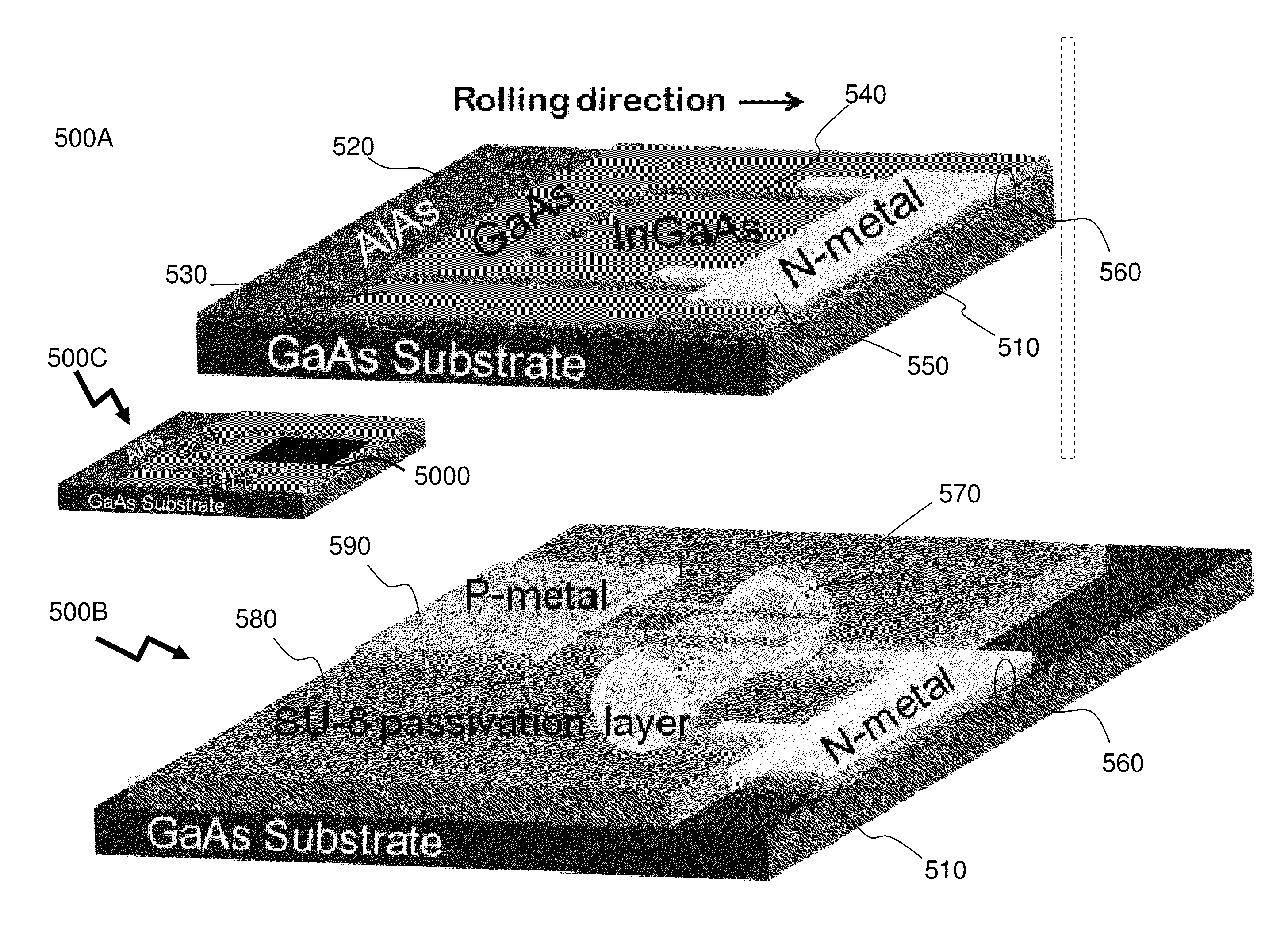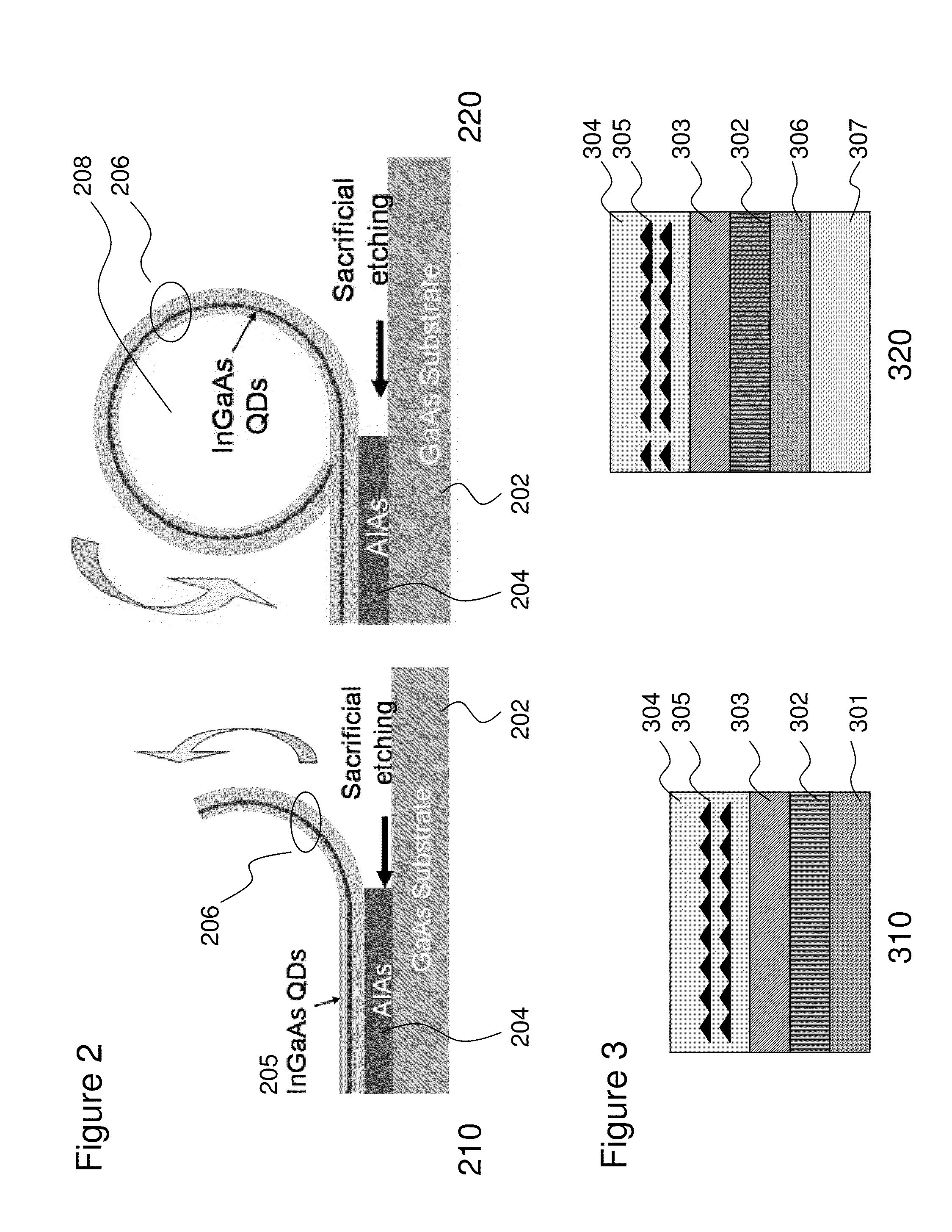Method for Fabricating Optical Semiconductor Tubes and Devices Thereof
a technology of optical semiconductor tubes and manufacturing methods, applied in the direction of nanotechnology, electrical equipment, lasers, etc., can solve the problems of difficult low-pass threshold operation, high efficiency, and difficult to achieve high-efficiency, and achieve high-pass threshold operation, etc., to achieve the effect of direct growth of optical semiconductor tubes or inability to achieve direct growth
- Summary
- Abstract
- Description
- Claims
- Application Information
AI Technical Summary
Problems solved by technology
Method used
Image
Examples
Embodiment Construction
The present invention is directed to semiconductor optical devices, and more specifically to method of manufacturing micro- and nanotubes and devices incorporating them.
Reference may be made below to specific elements, numbered in accordance with the attached figures. The discussion below should be taken to be exemplary in nature, and not as limiting of the scope of the present invention. The scope of the present invention is defined in the claims, and should not be considered as limited by the implementation details described below, which as one skilled in the art will appreciate, can be modified by replacing elements with equivalent functional elements.
Within the text below and the embodiments of manufacturing, use, etc contained within the term “semiconductor tube” has been used and refers to either a semiconductor tube or a semiconductor nanotube. Similarly whilst reference is made primarily to GaAs / InAlGaAs semiconductors for embodiments of the invention it would be understood ...
PUM
| Property | Measurement | Unit |
|---|---|---|
| thicknesses | aaaaa | aaaaa |
| thicknesses | aaaaa | aaaaa |
| diameters | aaaaa | aaaaa |
Abstract
Description
Claims
Application Information
 Login to View More
Login to View More - R&D
- Intellectual Property
- Life Sciences
- Materials
- Tech Scout
- Unparalleled Data Quality
- Higher Quality Content
- 60% Fewer Hallucinations
Browse by: Latest US Patents, China's latest patents, Technical Efficacy Thesaurus, Application Domain, Technology Topic, Popular Technical Reports.
© 2025 PatSnap. All rights reserved.Legal|Privacy policy|Modern Slavery Act Transparency Statement|Sitemap|About US| Contact US: help@patsnap.com



